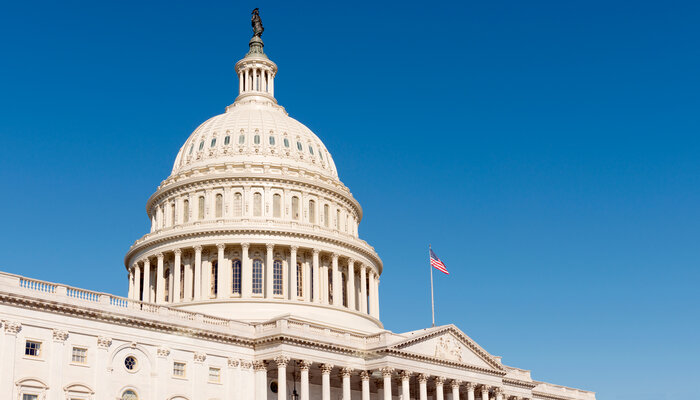On June 22, Senate Republicans used the filibuster to block a vote on the For the People Act, the historic voting rights and democracy reform bill. But major federal democracy reform is very much alive. Indeed, in the face of an unprecedented assault on voting rights, the imminent threat of another cycle of extreme partisan gerrymandering, and the decade-long erosion of campaign finance rules, key leaders including President Biden, Senate Majority Leader Charles Schumer, and Sen. Joe Manchin of West Virginia have all expressly recognized that inaction is simply not an option.
In reality, the June 22 vote was the first in what will almost certainly be a series of votes — another showdown happened in the early morning hours of August 11 when the bill was sent out of committee. And the filibuster, even if it continues, is not unalterable. It should be possible to preserve deliberation and debate without allowing a minority to simply halt Senate action on vital legislation.
The filibuster has in fact undergone many modifications over its history, which can be accomplished via rules changes that require a simple majority vote. As in the past, there is a clear path for senators anxious to preserve what they see as the main benefits of the filibuster to do so while still moving forward with much needed legislation to secure voting rights, end extreme gerrymandering, and combat corruption.
The filibuster has never been set in stone
The filibuster, which currently requires 60 votes to overcome, is a procedural mechanism that a minority of senators can use to indefinitely delay the end of debate on legislation (known as cloture). It was not part of the framers’ original plan for the Senate, and in fact arose by accident in 1805, when the Senate eliminated its original rule for cutting off debate. The first filibuster did not occur until 1837, and the maneuver was not used with any frequency until after the Civil War.
Critics of the filibuster have pointed to its fundamentally antidemocratic character and its use to block civil rights legislation — most infamously before and during the civil rights era, when southern segregationists used it to block anti-lynching legislation, anti-poll tax legislation, and to delay the Civil Rights Acts of 1957, 1960, and 1964.
But since the 1970s, the filibuster has become part of the normal practice of the Senate. Now it is assumed that 60 votes are needed for most legislation. Its defenders argue that it protects the rights of the minority and forces bipartisan deliberation and compromise, though there little to no evidence of the latter outcome — if anything, the filibuster today is an impediment to compromise.
The filibuster itself has been changed numerous times. Between 1969 and 2014, 161 exceptions to its supermajority requirement were created. Senate majorities from both parties have approved carve outs and other changes related to executive branch and judicial nominations, budget reconciliation measures, and more. Even the 60-vote threshold has not always been a defining feature of the filibuster. In 1975, the Senate voted to lower the threshold from 67 votes to 60, as one response to the demand for reforms in the aftermath of Watergate.
Another consequential change in the mid-1970s was adoption of the “two-track” policy, which functionally eliminated the “talking filibuster.” Before this rule change, senators were required to hold the floor to execute a filibuster, blocking all Senate business until a cloture vote could be held. To better utilize time, the new rule established the dual-tracking system, allowing the Senate to work on multiple bills at once. Any bill being filibustered would move to a “back burner” until a cloture vote could be held, while the Senate focused on other bills instead. This change made it easier for a minority to kill a bill by simply indicating a desire to filibuster, thus blocking it before it ever can reach the Senate floor.
In short, the filibuster has always been subject to revision. Even if there is not support for its full elimination now, there is ample precedent for further modifications that would allow passage of the For the People Act or similar legislation.
Options for modifying the filibuster today
There are a number of ways to further modify the filibuster to mitigate its worst antidemocratic characteristics while preserving, and even enhancing, its deliberative benefits. Below are some of the most discussed, although the list is not exhaustive.
One appealing change is to do away with the two-track model and return to the talking filibuster, as President Biden and others have advocated. Currently, the minority merely needs to inform the majority of an intent to filibuster a bill and the legislation is set to the side. Restoring the talking filibuster would require the minority to be present and actively hold the Senate floor for the duration of a filibuster.
This change would raise the stakes for deploying a filibuster and potentially create more incentive for bipartisan compromise. For instance, senators overcame a taking filibuster at a critical moment during the debate over the Civil Rights Act of 1964, when Democratic Senate whip Hubert Humphrey worked with his Republican colleague Everett Dirksen to modify the bill to make it more appealing to the Republican minority, most of whom subsequently voted for it.
A return to a talking filibuster should be paired with a change to the voting threshold required to invoke cloture. One approach is to institute a “step-down” process like that originally proposed by Sens. Tom Harkin and Joe Lieberman in 1995 that would allow for successive votes gradually reducing the number of senators required to close debate until it reaches 51. In other words, opponents would be able to slow down legislation backed by a majority, but the majority’s will would still ultimately prevail.
The reality is that in today’s polarized, closely divided Senate, an unattainable 60-vote threshold for major legislation does not incentivize compromise in most instances, because the minority has no actual incentive to come to the bargaining table. A step-down process would create such an incentive while providing extra time for deliberation and compromise. It would preserve the filibuster while allowing a majority vote on time-consuming but vital legislation.
These are not the only possible reforms. Another change that has been suggested is to shift the voting burden for cloture to the minority that wants to prolong debate instead of the majority that wants to end it. Under current rules, it is the majority’s burden to invoke cloture, a lengthy process that requires all members voting in favor to be physically present. Like restoring the talking filibuster, flipping the voting burden to the minority would raise the stakes for filibustering legislation, incentivizing senators to do so less often and to be more open to compromise. Another widely discussed option is to carve out a new limited exception to the filibuster for certain types of bills, such as those protecting voting rights or constitutional rights more generally.
How to deal with the filibuster in the context of the pressing need to pass major federal voting rights and democracy reform legislation does not present a binary choice. The filibuster has been changed many times in response to pressing national imperatives, and it can be changed again without being fully eliminated. That path should be pursued without delay.



